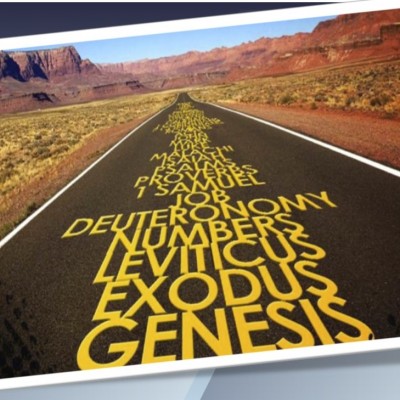Gen 24 – Isaac and Rebekah Marriage
“The Lord had blessed Abraham in every way”.
The elder over his house – steward over all that belonged to Abraham, and had Abraham not have had any children, who would have inherited all that Abraham owned at his death.
Hand under my thigh (loins). It is actually meant to refer to the circumcised part of the body, which refers to the oath made between God and Abraham and his descendants.
Abraham tells the servant to go back to Abraham’s homeland to find Isaac a bride, but refuses to let Isaac himself return to that land, because God promised to give to Abraham and Isaac the land where they now lived. Abraham didn’t want to do anything to jeopardize Isaac receiving the fulfillment of God’s promise.
In addition, he knew that Isaac should not marry anyone from the land where he currently lived. Marriage rites performed for Canaanites would involve religious rituals that were not fitting for those belonging to God, and also the Canaanites were degenerating into wickedness.
He believed that God would send His angel before the servant to prepare the way for Isaac’s bride to be found, and that she would be willing to return to Isaac as his bride. If the woman did not want to come, the servant was released from the obligation and oath.
The servant devised a plan to find an appropriate wife for Isaac and asked for God to show him success in the endeavor. He would ask for water as girls drew from the town well, and if the girl also offered to water his 10 camels, he would know that she was the right girl for Isaac.
BEFORE HE HAD FINISHED SPEAKING, beautiful Rebekah came out, responded willingly to the servant’s request for water, and offered to water the camels. The servant quietly watched Rebekah to see if she would do what she said. (Note, it wasn’t enough for her to offer to do something, which many people do – the servant was looking for someone who would actually follow through and do what they said, who kept their word, was a person of integrity.
WHEN THE CAMELS HAD FINISHED DRINKING, he took a gold ring for her nose and 2 gold bracelets and asked if the girl’s family could lodge him and his camels, and she responded that she was, basically, Abraham’s niece, Isaac’s first cousin.
NOSE-RING (½ oz in weight) It was hung not from the central cartilage of the nose, but from the left nostril, the flesh of which was pierced for the purpose; and such rings are still the usual betrothal present in Arabia, and are commonly worn both there and in Persia.
In response to hearing this, the servant worshiped God, blessing Him for showing Abraham loving kindness in helping the servant to find a beautiful girl of integrity from Abraham’s family.
The servant explained the situation to her brother, Laban, and father, Bethuel, and they believed it was the Lord’s will that Rebekah go with him to be Isaac’s bride.
The servant’s response again was to worship God. Then he brought out beautiful and valuable gifts for Rebekah, her brother and mother. The servant wanted to leave immediately with Rebekah, but her mother asked that Rebekah stay for 10 more days, but they let Rebekah decide for herself. She went immediately, with her nurse and maids.
Her family blessed Rebekah, wishing her many descendants who would prosper over their enemies.
When Rebekah rode up, Isaac, who was living in the Negev, came out to find out what was going on. When Rebekah understood it was the man she was to marry, she covered herself with her veil, as was the Oriental custom. A red veil is the bride-vail that covers the whole body, signifying she is the bride to be, while an ordinary vail is blue or white. After the wedding, the veil was rarely worn (which is why the Egyptians and Abimelech saw Sarah’s beauty and wanted her.
The servant explained to Isaac what Abraham had asked and who the servant had arrived with. Isaac married Rebekah and loved her.
- There were three states of a marriage in the Bible:
- Stage 1: signing the “ketubbah” contract (Creating the marriage bond)
i. The bride would chose her husband and her father would sign a legal contract with him called a “ketubbah”.
ii. Once this is signed the couple is 100% married but do not have sex yet.
iii. Young children were often married, (arraigned marriage) but did not consummate until of age.
- Stage 2: The “chuppah”: sexual consummation.
i. Up to 7 years later, the groom is able to raise the money as set out in the ketubbah contract and notifies the father of the bride, who then sets a date to consummate the marriage at the bride’s home.
ii. The bride waits with her maidens, for the arrival of the groom and his companions.
iii. The couple enters the chuppah room and consummates the marriage while the companions of the bride and groom wait and celebrate outside or in the next room.
iv. The groom hands the bloodied “proof of virginity cloth” to the witnesses chosen by the bride’s parents, who then give it to the bride for safekeeping.
- Stage 3: The wedding feast
i. After consummation, the entire wedding party walks to the house of the groom in a procession for a wedding feast.
ii. At the conclusion of the wedding feast, the couple has completed the ancient ritual of marriage.
- There was no “wedding ceremony” in the synagogue in the first century, performed under a canopy where the bride and groom would hold hands and say, “I do” before an audience of friends and family. This didn’t develop for hundreds of years after Jesus died on the cross as the Passover lamb for the sins of mankind.
